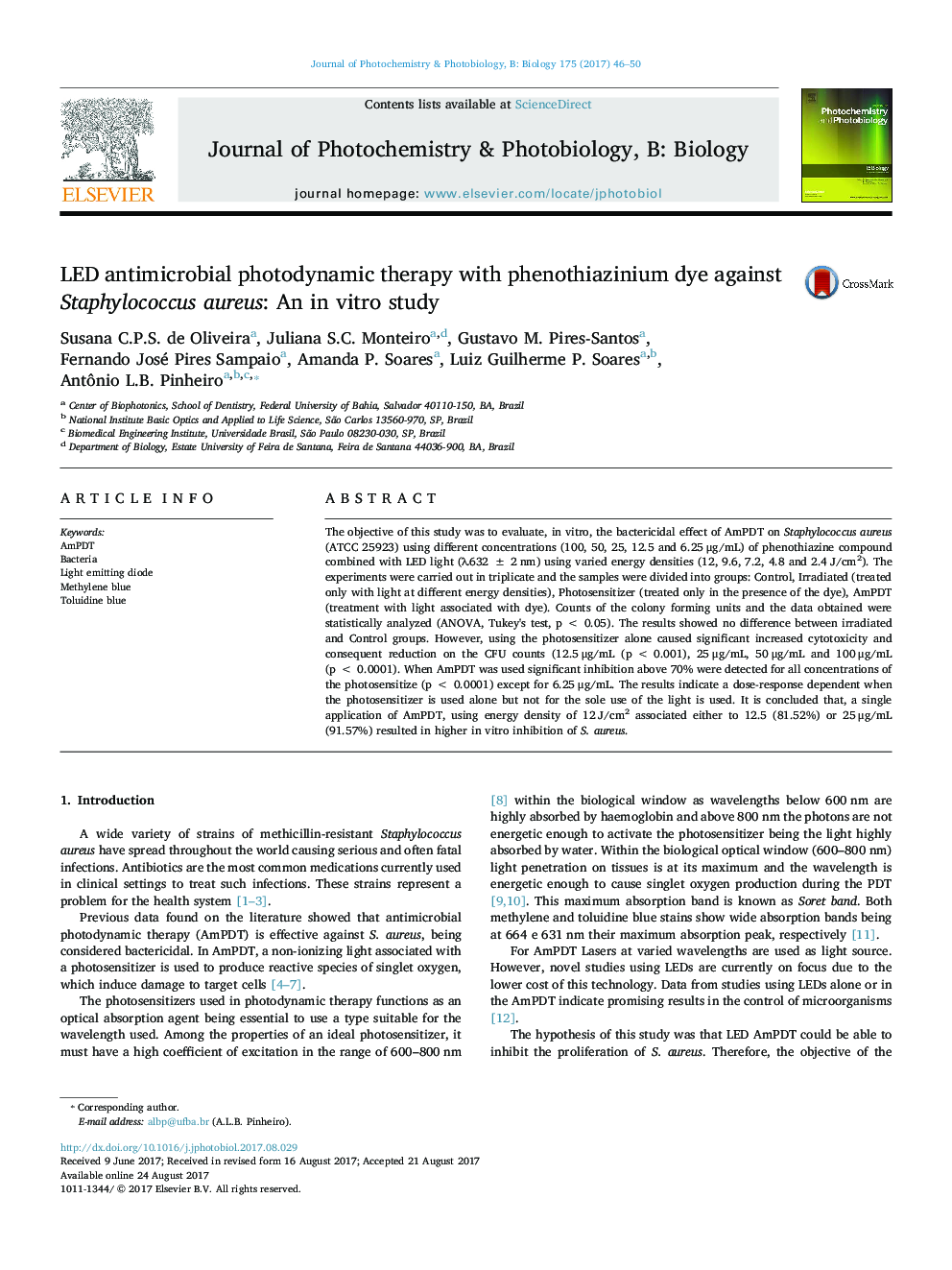| Article ID | Journal | Published Year | Pages | File Type |
|---|---|---|---|---|
| 6452504 | Journal of Photochemistry and Photobiology B: Biology | 2017 | 5 Pages |
â¢Microbial resistance to antibiotics is a major concern of health systems.â¢Antimicrobial photodynamic therapy is an alternative to antibiotics.â¢Efficacy of AmPDT depends on concentration of the photosensitizer and energy density.â¢The use of 25 μg/mL of photosensitizer/12 J/cm2 LED light killed 91.57% of the bacteria.
The objective of this study was to evaluate, in vitro, the bactericidal effect of AmPDT on Staphylococcus aureus (ATCC 25923) using different concentrations (100, 50, 25, 12.5 and 6.25 μg/mL) of phenothiazine compound combined with LED light (λ632 ± 2 nm) using varied energy densities (12, 9.6, 7.2, 4.8 and 2.4 J/cm2). The experiments were carried out in triplicate and the samples were divided into groups: Control, Irradiated (treated only with light at different energy densities), Photosensitizer (treated only in the presence of the dye), AmPDT (treatment with light associated with dye). Counts of the colony forming units and the data obtained were statistically analyzed (ANOVA, Tukey's test, p < 0.05). The results showed no difference between irradiated and Control groups. However, using the photosensitizer alone caused significant increased cytotoxicity and consequent reduction on the CFU counts (12.5 μg/mL (p < 0.001), 25 μg/mL, 50 μg/mL and 100 μg/mL (p < 0.0001). When AmPDT was used significant inhibition above 70% were detected for all concentrations of the photosensitize (p < 0.0001) except for 6.25 μg/mL. The results indicate a dose-response dependent when the photosensitizer is used alone but not for the sole use of the light is used. It is concluded that, a single application of AmPDT, using energy density of 12 J/cm2 associated either to 12.5 (81.52%) or 25 μg/mL (91.57%) resulted in higher in vitro inhibition of S. aureus.
Graphical AbstractDownload high-res image (89KB)Download full-size image
